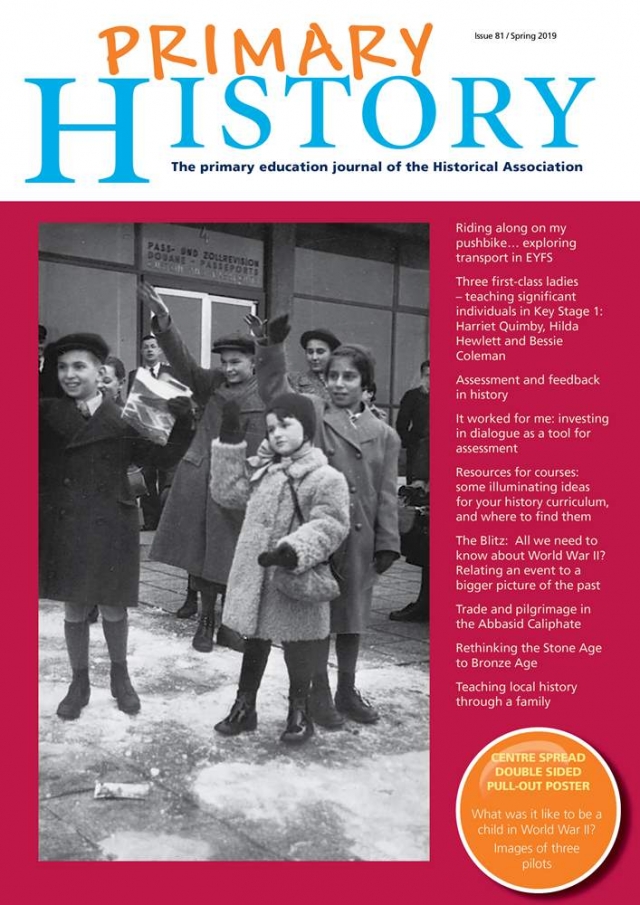Primary History 81: Out now
HA journal news

Enriching your curriculum
It seems we can’t escape the word ‘curriculum’ these days. The start of the year has brought us Ofsted’s new draft inspection framework, currently out for consultation. There is a new focus on the substance of education: what gets taught and how it gets taught. At first glance, there is much to reassure us. In particular, the acknowledgement that ‘a primary school that fulfils the spirit as well as the letter of the national curriculum, across the full range of subjects, is already in the right place with its curriculum’.
It is also reassuring to see Ofsted acknowledge the autonomy of schools to choose their own curriculum intent, coverage, content, structure and sequencing. This is important because we have considerable freedom to interpret the statutory content of the primary history curriculum. Our additional requirement to teach local history in both Key Stage 1 and Key Stage 2 means that curriculum coverage will, and should, differ from school to school. One curriculum cannot fit all.
Having said that, there are some key questions which we should all consider. What is the core subject content knowledge that is essential to your chosen periods of history? You can’t teach everything. What you choose to leave out is as important as what you choose to leave in. How are you ensuring links within and between periods, so that pupils can begin to make connections and understand the long arc of history? How does your curriculum respond to and reflect the experiences of the children you teach, and how does it open up new perspectives of the past and new ways of seeing the world?
In this issue, we suggest a variety of ways you can enrich your existing curriculum (and develop your subject content knowledge along the way). 2019 marks eighty years since the start of World War II. Paul Bracey encourages us to go beyond the obvious – was there more to the war than the Blitz and evacuees? Tim Lomas suggests how good local history could be taught through a focus on a particular family, and Alf Wilkinson provides two case studies which help us to rethink how we approach teaching the Stone Age and Bronze Age. Karin Doull considers how a study of women pilots and early flight might provide an engaging focus for teaching significant individuals in Key Stage 1. The transport theme is continued in EYFS with a look at the history of the humble push bike.
Alun Morgan and Sarah Winser discuss two different approaches to assessing history. And with the new financial year approaching in April, we also give you some low-cost ideas for resourcing your curriculum: Rebecca Iddon shows how good learning and teaching in history can be achieved with a range of simple artefacts and resources.
The impending changes to the school inspection framework should not, of course, be the driver for a renewed focus on curriculum. We should provide a robust, rich and relevant history curriculum because we know that this is the right thing for the children we teach. And as always, we hope the articles in Primary History support you with this.

